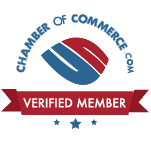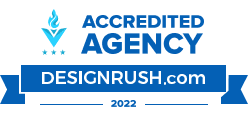The onboarding process is a critical part of any organization. It shapes an employee’s first impressions, sets the tone for their professional relationship with the company, and equips them with the necessary tools and information to become productive members of the team. However, many businesses struggle to optimize this crucial period, often due to limited resources or a lack of specialized knowledge.
In this article, we will explore the benefits and challenges of outsourcing employee onboarding. We’ll discuss how integrating outsourced solutions can streamline the onboarding experience, making for a smoother transition for new hires. We will also provide actionable tips for effectively combining in-house and outsourced onboarding processes.
The Case for Outsourced Onboarding
Business operations are becoming more complex by the day, and human resource departments often find themselves stretched thin. Handling recruitment, employee relations, payroll, and benefits is a daunting task, even without adding onboarding to the mix. Outsourcing the onboarding process can be a strategic move that frees up internal resources and introduces efficiency and expertise into the process.
Outsourcing also has the advantage of standardization. A professional agency specializes in the onboarding process and can apply industry best practices that you might not be aware of. Consistency in onboarding ensures every employee has the same fundamental understanding of the company and their role within it, which can be crucial for company culture and long-term success.
The Importance of Seamless Integration
A disjointed onboarding experience can disorient new hires and make them less confident about their role within the company. Therefore, integrating the outsourced and in-house onboarding processes is essential for a smooth transition.
A study conducted by Glassdoor shows that employees who rated their onboarding experience as “highly effective” were 18 times more likely to feel highly committed to their organization. This statistic underlines the significance of a well-executed, integrated onboarding process. Companies can achieve this by coordinating closely with the outsourcing agency. Timelines, objectives, and responsibilities should be clearly laid out to avoid any overlaps or gaps.
Practical Tips for Integration
Preliminary Planning
Before seeking an outsourcing agency, make sure you clearly understand what your in-house HR can and cannot handle. Knowing your internal capabilities and limitations will guide you toward outsourcing the aspects of onboarding that are most burdensome or specialized. This self-awareness ensures you won’t outsource functions that are better handled in-house due to specific company culture or values.
Once you have a clear understanding of your needs, you can then shortlist agencies that offer those specific services. Research and due diligence are essential at this stage to select an agency that not only fills the gap but also aligns with your organizational ethos. This proactive planning sets the stage for a more harmonious and effective partnership.
Communication is Key
Regular updates and meetings between your HR team and the outsourcing agency are essential for effective onboarding. These interactions allow for real-time feedback and adjustments, making sure the onboarding process is continually refined. It also provides an opportunity to immediately address any issues or misunderstandings that may arise, preventing minor problems from escalating into major roadblocks.
Open channels of communication also help in ensuring that the onboarding experience is seamless for the new hires. Both parties being on the same page can eliminate contradictory instructions or redundant tasks that can confuse new employees. Therefore, scheduling frequent check-ins and update meetings is crucial for successful integration.
Technology Utilization
Utilizing a shared digital platform is a practical way to streamline the integration process. A centralized system where both parties can update progress, share documents, and clarify doubts ensures that everyone has access to the same information. This enables quick decision-making and keeps things transparent, making the process more efficient.
Moreover, having a shared digital space helps keep a record of what has been accomplished and what tasks are pending. It allows for better monitoring of the onboarding process and ensures accountability from both the internal HR team and the outsourcing agency. This technological coordination can be the cornerstone of an effective, integrated onboarding process.
Feedback Loop
Collecting feedback from new hires about their onboarding experience provides invaluable insights. This information can highlight areas where the integration between in-house and outsourced elements can be improved. Implementing changes based on this feedback can create a more seamless and satisfactory onboarding process for future hires.
Apart from refining the process, feedback also acts as a tool for performance assessment of the outsourcing agency. Consistent feedback can indicate whether the agency is meeting your organization’s expectations and objectives, and can inform decisions about future collaboration. Regularly collecting and analyzing this data will fortify the effectiveness of the hybrid onboarding model.
Legal Compliance
Compliance with legal requirements related to employment and data protection is crucial when outsourcing any part of HR functions. Non-compliance can not only result in financial penalties but can also damage your company’s reputation. Therefore, ensuring that the outsourcing agency is fully compliant should be a non-negotiable criterion during the selection process.
In addition to the initial vetting, ongoing audits or checks should be part of the agreement with the outsourcing agency. This will ensure that they remain compliant with legal updates and changes in regulations. The in-house HR team should be aware of these requirements as well, as legal responsibility ultimately lies with the company, not the outsourced agency.
Conclusion
Outsourcing the employee onboarding process can offer many advantages, including resource optimization and standardization of procedures. However, to reap the full benefits, companies must ensure seamless integration of outsourced and in-house activities. By planning meticulously, communicating effectively, and using technology wisely, businesses can create an onboarding experience that is both efficient and personalized.
As organizations continue to look for ways to improve efficiency without sacrificing quality, outsourcing parts of the employee onboarding process may become more common. But the key to success lies in effective integration that combines the best of both worlds, providing new hires with a smooth transition that sets them up for long-term success in the organization.





